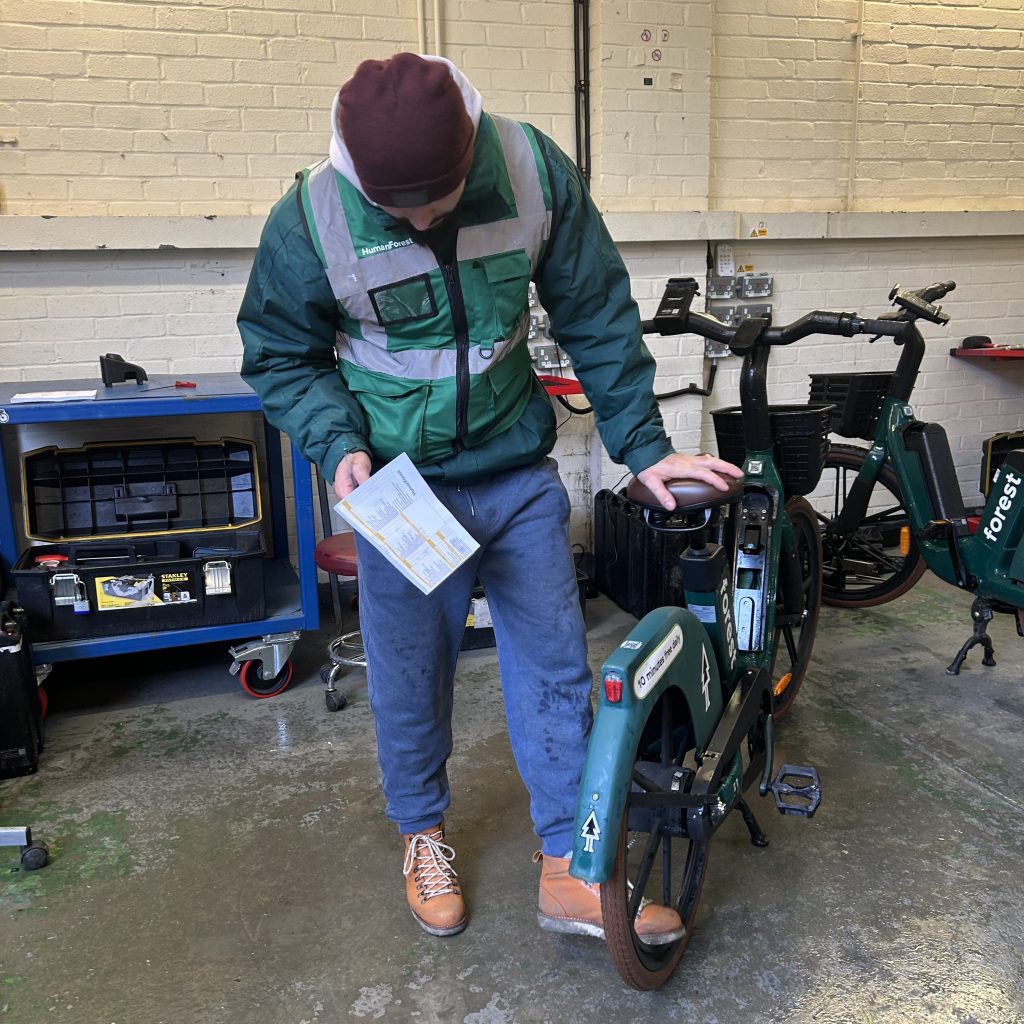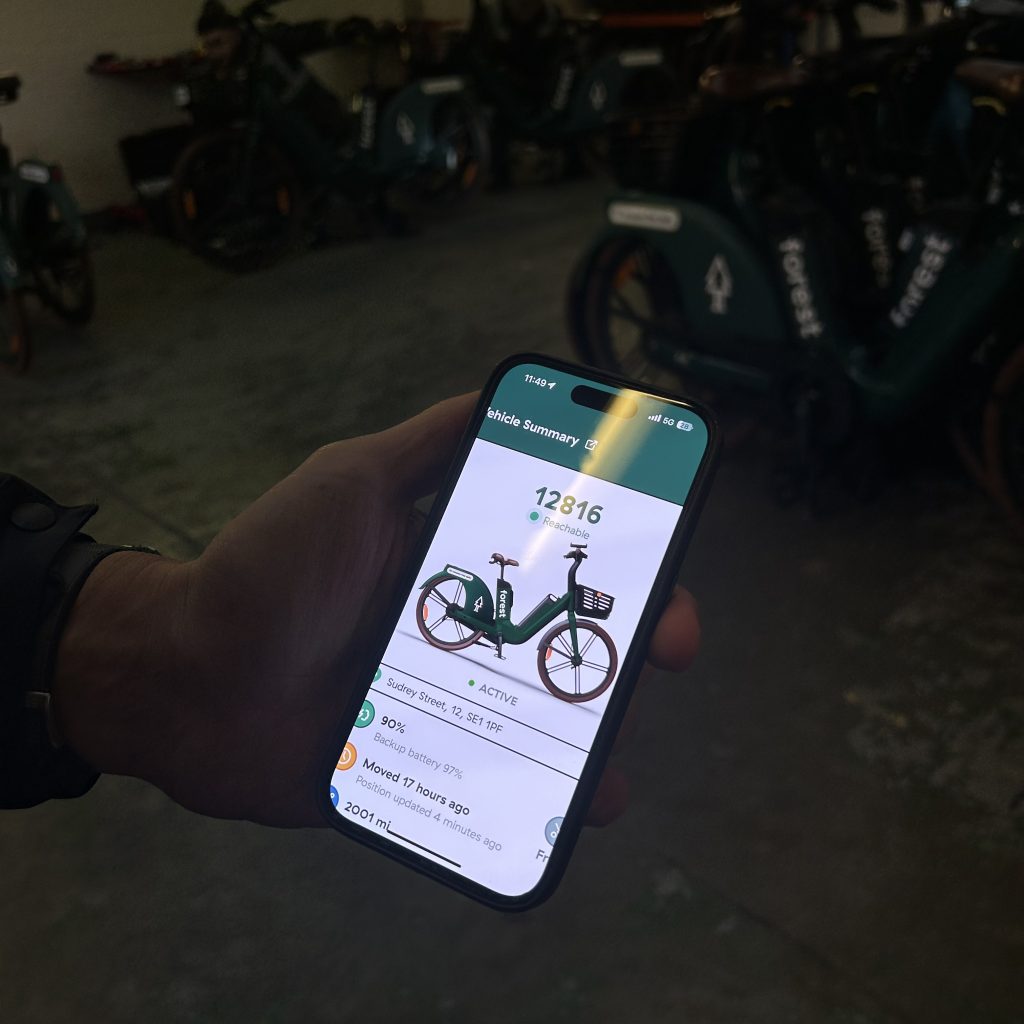Forest’s eye for doing things differently goes all the way back to its warehouse.
Perhaps it’s easy to miss the London-based startup’s operational facility tucked within the capital’s bustling streets, but it’s not long before the lined up staple e-bikes and hi-vis dressed people crossing the road from one industrial gate to another lets you know you’ve entered the Forest hub.
And once inside, a whole world of buzzing operations is at play.
The realm of refurbishing
One focus that Forest’s Head of Operations Will Jansen has had over the last year is refurbishing faulty components from its fleet of e-bikes.
Rather than ordering new parts that need a repair, Will’s team are channelling their efforts into giving existing components a new lease of life.
“When we first started the business there were a lot of unknowns about the bikes. If we needed a new component, we would naturally think to order it from the supplier and the old part would go into recycling. But now we’re focused on fixing the component,” Will says.
Will tells Zag Daily that 80% of the components in need of repairing are fixed by the in-house refurbishing team within as little as 20 minutes.
“The nature of the industry is that parts get vandalised and used and abused,” Will explains. “It’s a hard life for a bike on the street.
“It therefore made sense to us that we should be fixing the parts that come in and not just having a throwaway culture.”
The focus on repairing faulty components underlines Forest’s mission to foster sustainable transport solutions and serves to significantly reduce the miles that come with new components from an overseas supplier.
This also makes commercial sense too with a labour cost that’s approximately half the price of shipping a new component.
A new motor, for example, costs $90 to purchase from a factory. As a vulnerable component which is put under a lot of stress, it’s not rare for this component to break, causing operational costs to quickly steepen.
But for Forest’s refurbishing team that can now repair motors in under half an hour, this is no longer a concern.
A chain of events
A Forest e-bike in need of repair will go through a series of stages before being redeployed the very same day.
“There’s no room for bike locking overnight. It gets repaired and goes straight back out,” says Will.

Once it’s reported, the e-bike is brought into the warehouse and is diagnosed by a member of staff. The components that need attention are put into a basket which crosses the other side of the facility to be repaired by mechanics. Once repaired, the e-bike then goes through multi-point checks to ensure that everything is aligned correctly before a tester takes it out to assess its road-readiness.
To further optimise the efficiency of the bike repairs, Forest’s operational team is transitioning from paper to an internal app which aggregates the repairs made and informs the team which components see repairs most often.
The app also monitors when batteries are swapped and offers staff a step-by-step tutorial for the work that needs to be done.

These measures taken by Will’s team are in line with its long-term operational goal of keeping e-bikes on the road without needing a repair for a month. Currently, it’s two weeks.
“The repair isn’t normally something big,” Will tells Zag. “It could just be that something’s come loose, but it’s still a problem for the rider because it’s rattling away while they’re riding.”
Will argues that the micromobility industry sometimes sees quality compromised for a vehicle upgrade. For Forest’s operational team, keeping good quality e-bikes on the road is highest on the agenda.
“It’s almost like the industry got obsessed with always upgrading and bringing out the latest vehicle,” he says.
“With the cost of materials, it’s unsustainable to have that mentality when fundamentally there just needs to be a sustainable transport solution offered to people.
“A bicycle is simple, and people know how to ride it. Upgrading the vehicle every six months can be a sinking ship for companies because it fosters a throwaway culture.”
A new battery site
Three months ago, Forest expanded its operations to another site across the road. A site solely dedicated to batteries.
With safety at its forefront, this expansion isolates batteries from the rest of the warehouse as an added precaution in the event of a battery fire. Each battery is separated from its charger with ventilation in the battery containers, and the site offers easy access to fire engines in case of an emergency.
Efficiency is also another reason for the move.
“A separate space for battery charging allows distinct access to the site,” Will says. “This in turn improves efficiency for the drivers when collecting and dropping off batteries.
“These two containers are sustaining all the bikes that we’ve got,” Will says as I cast my eyes over the two containers uniformly lined with batteries.
A forward-looking Forest
With plans to launch in a European city next year, Forest is balancing fleet expansion with lean warehouse operations.
“Getting the balance of supply of bikes and demand from customers is vital in order to keep costs under control.”
Having reached profitability earlier this year – something that Europe’s larger micromobility players have been unable to achieve – one can trust that the operator knows what it’s doing when it comes to making business decisions.
“I believe that we can make our vehicles last a lot longer than perhaps the industry standard thinks.”





